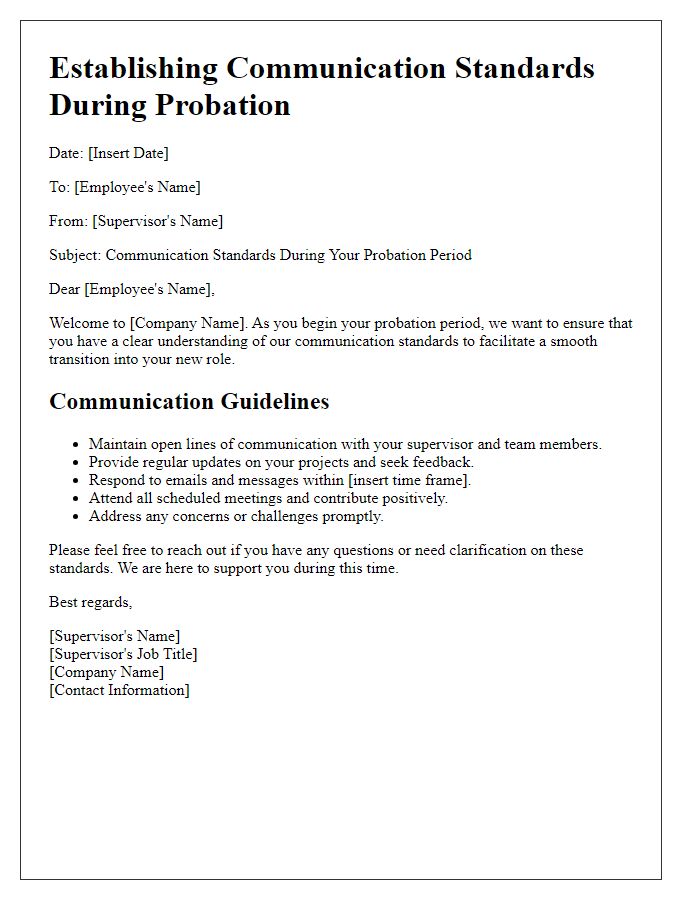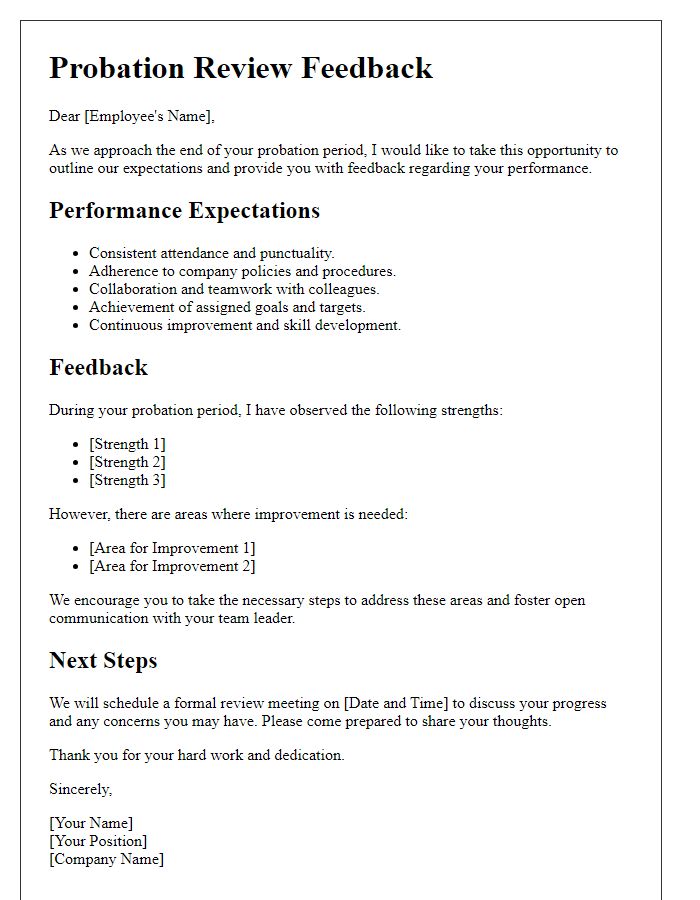As you embark on this exciting new journey with us, it's important to revisit the key expectations we have during your probationary period. This phase is all about learning, growth, and ensuring that we are aligned in our goals and values. By clearly outlining these objectives, we can work together to build a strong foundation for your success in our team. So grab a cup of coffee and read on to discover more about how we can navigate this period together!

Clarity in Responsibilities and Duties
During the probationary period, clarity in responsibilities and duties is crucial for new employees. Specific tasks expected include daily engagement in projects, adherence to deadlines, and maintaining communication with team members. Regular performance evaluations will occur at the end of the month, focusing on achievements and areas for improvement. Employees should familiarize themselves with company policies, particularly regarding collaboration tools like Slack and project management systems like Trello. Understanding these expectations ensures alignment with the overall objectives of the organization, fostering a productive workplace culture. Additionally, assessing competencies during this period will aid in determining job fit and potential for long-term success.
Performance Metrics and Goals
During the probation period, clearly defined performance metrics and goals are essential for employee development and organizational success. Key performance indicators (KPIs), such as productivity rates, customer satisfaction scores, and project completion timelines, need to be established for specific roles. These can include targets like achieving a sales increase of 15% within the first quarter or maintaining an average response time of under 24 hours for customer inquiries in a service position. Regular feedback sessions, scheduled biweekly, provide opportunities to discuss progress toward these goals, address challenges, and adjust strategies as necessary. Furthermore, alignment with company values and culture should be evaluated alongside quantifiable results to ensure a comprehensive performance assessment.
Support and Resources Offered
During the probationary period, employees must clearly understand job expectations to ensure success and alignment with company goals. Key resources include an employee handbook detailing company policies and procedures, online training modules that cover essential skills and job-specific tasks, and access to mentorship from experienced colleagues willing to provide guidance. Weekly check-ins with direct supervisors (typically occurring every Friday) will facilitate open communication regarding performance and areas for improvement. Furthermore, performance evaluation metrics--such as key performance indicators (KPIs) specific to the role--will be established to track progress. Additional resources available include access to the company's intranet for up-to-date information on ongoing projects and initiatives to enhance collaboration amongst team members.
Feedback and Communication Channels
During the probation period, clear communication about job expectations is essential for employee success and organizational alignment. Key performance indicators (KPIs) should be outlined, including measurable objectives such as sales targets (e.g., 20% increase in quarter-over-quarter performance) or project milestones (e.g., completion of three major projects within the first six months). Regular feedback sessions, scheduled bi-weekly or monthly, should be established to discuss performance, offer constructive feedback, and facilitate open dialogue regarding challenges or areas for improvement. Communication channels, such as direct email correspondence, internal messaging platforms like Slack, or face-to-face meetings, should be specified to ensure that the employee feels supported and understands where to seek guidance. These structured interactions help reinforce expectations and foster a positive work environment, ultimately leading to better outcomes for both the individual and the organization.
Consequences and Next Steps
During the probationary period, clear job expectations are crucial for employee success and organizational alignment. Specific performance metrics (such as meeting project deadlines within a 10% margin) and behavioral standards (like exhibiting teamwork in cross-departmental collaborations) need to be communicated effectively. Consequences of not meeting these expectations include potential termination of employment or extension of the probation period, which may lead to further evaluations. Next steps involve scheduled performance reviews (for example, bi-weekly check-ins) to discuss progress and identify areas for improvement, ensuring support and clarity throughout the probationary process. These measures foster accountability and encourage growth, aligning individual contributions with company objectives.
Letter Template For Reiterating Job Expectations During Probation Samples
Letter template of job expectations for new hires in probationary period

Letter template of outlining roles and responsibilities during probation

Letter template of setting objectives and targets for probationary staff

Letter template of discussing performance evaluation criteria in probation

Letter template of establishing communication standards during probation









Comments